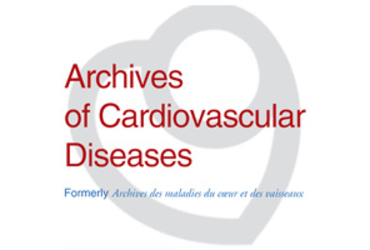Background :
The long-term evolution of premature coronary artery disease (CAD) is unknown.
Objectives :
The objective of this study was to describe the evolution of coronary atherosclerosis in young patients and identify the risk factors of poor outcomes.
Methods :
Participants age ≤45 years with acute or stable obstructive CAD were prospectively enrolled and followed. The primary endpoint was all-cause death, myocardial infarction (MI), refractory angina requiring coronary revascularization, and ischemic stroke.
Results :
Eight hundred-eighty patients with premature CAD were included. They were age 40.1 ± 5.7 years, mainly men, smokers, with a family history of CAD or hypercholesterolemia. At baseline presentation, 91.2% underwent coronary revascularization, predominantly for acute MI (78.8%). Over a follow-up of 20 years, one-third (n = 264) of patients presented with a total of 399 ischemic events, and 36% had at least a second recurrent event. MI was the most frequent first recurrent event (n = 131 of 264), mostly related to new coronary lesions (17.3% vs. 7.8%; p = 0.01; hazard ratio [HR]:1.45; 95% confidence interval [CI]: 1.09 to 1.93 for new vs. initial culprit lesion). All-cause death (n = 55; 6.3%) occurred at 8.4 years (median time). Ethnic origin (sub-Saharan African vs. Caucasian, adjusted hazard ratio [adjHR]: 1.95; 95% CI: 1.13 to 3.35; p = 0.02), inflammatory disease (adjHR: 1.58; 95% CI: 1.05 to 2.36; p = 0.03), and persistent smoking (adjHR: 2.32; 95% CI: 1.63 to 3.28; p < 0.01) were the strongest correlates of a first recurrent event. When considering all recurrent events, the same factors and Asian ethnicity predicted poor outcome, but persistent smoking had the greatest impact on prognosis.
Conclusions :
Premature CAD is an aggressive disease despite the currently recommended prevention measures, with high rates of recurrent events and mortality. Ethnicity and concomitant inflammatory disease are associated with poor prognoses, along with insufficient control of risk factors.






